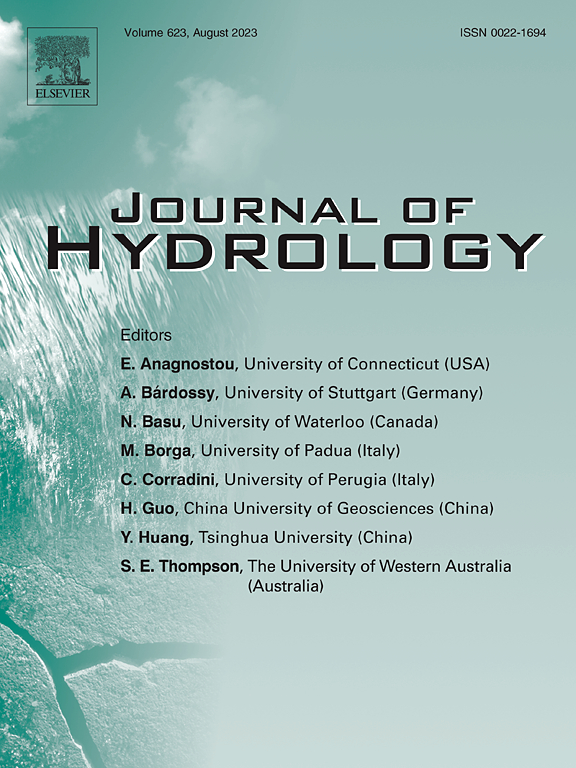大木材下沉条件及垃圾架最大回水上升量的量化
IF 5.9
1区 地球科学
Q1 ENGINEERING, CIVIL
引用次数: 0
摘要
大木材(LW)的积累是河流管理的一个重要问题。堆积物的下沉行为改变了堆积物的形态和淹没体积,进而改变了水流状况,给水工建筑物带来了很大的风险。通过室内模型试验,创新性地引入临界弗劳德数作为浮在水面上密度均匀的大木排(LWR)沉起的指标。LWR长度的增加、直径流深比的提高、LW密度的降低等因素都会导致临界弗劳德数的提高。在此基础上,提出了一个估算临界弗劳德数的公式,该公式由LWR的直径、密度和长度参数化。此外,LW的下沉同时增加了回水上升,降低了来水流速,最终停止了进一步下沉,在一定流量条件下产生了最大回水上升。通过对这一特殊状态的建模,推导并分析了最大回水水位的预测公式。总体而言,本研究增强了对河流LW沉降动力学的理解,并为河流LW管理提供了深入的见解。本文章由计算机程序翻译,如有差异,请以英文原文为准。
Quantification of the sinking conditions of large wood and maximum backwater rise at trash racks
The accumulation of large wood (LW) is a significant concern for river management. The sinking behavior of LW plays a crucial role in altering the shape and submerged volume of LW accumulation, which in turn changes the flow condition and poses a high risk to hydraulic structures. Through laboratory model tests, this work innovatively introduces the critical Froude number as an indicator for the initiation of sinking in a large wood row (LWR) with uniform density floating on the water surface. Factors such as increased LWR length, a higher diameter-to-flow depth ratio, and reduced LW density all lead to a higher critical Froude number. Based on these findings, a formula is proposed to estimate the critical Froude number, which is parameterized by the diameter, density, and length of LWR. Additionally, the sinking of LW simultaneously increases backwater rise and decreases incoming flow velocity, eventually halting further sinking, and giving rise to the maximum backwater rise under the condition of certain discharge. By modeling this special state, a prediction formula for maximum backwater rise is derived and analyzed. Overall, this study enhances the understanding of LW sinking dynamics and provides deep insights into LW management in rivers.
求助全文
通过发布文献求助,成功后即可免费获取论文全文。
去求助
来源期刊

Journal of Hydrology
地学-地球科学综合
CiteScore
11.00
自引率
12.50%
发文量
1309
审稿时长
7.5 months
期刊介绍:
The Journal of Hydrology publishes original research papers and comprehensive reviews in all the subfields of the hydrological sciences including water based management and policy issues that impact on economics and society. These comprise, but are not limited to the physical, chemical, biogeochemical, stochastic and systems aspects of surface and groundwater hydrology, hydrometeorology and hydrogeology. Relevant topics incorporating the insights and methodologies of disciplines such as climatology, water resource systems, hydraulics, agrohydrology, geomorphology, soil science, instrumentation and remote sensing, civil and environmental engineering are included. Social science perspectives on hydrological problems such as resource and ecological economics, environmental sociology, psychology and behavioural science, management and policy analysis are also invited. Multi-and interdisciplinary analyses of hydrological problems are within scope. The science published in the Journal of Hydrology is relevant to catchment scales rather than exclusively to a local scale or site.
 求助内容:
求助内容: 应助结果提醒方式:
应助结果提醒方式:


